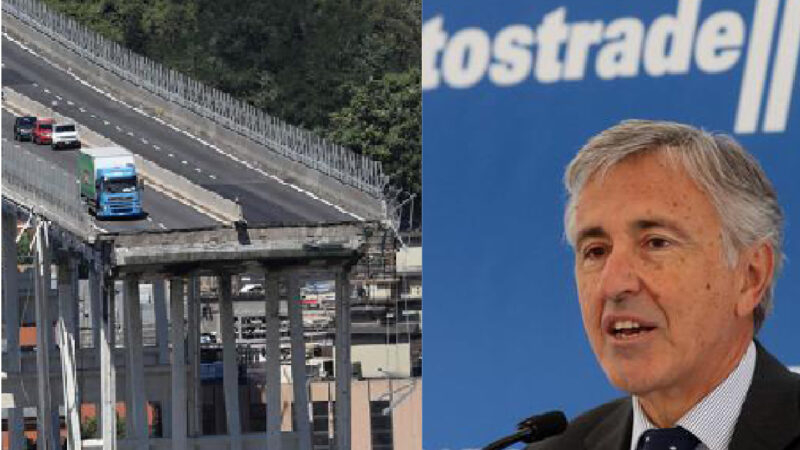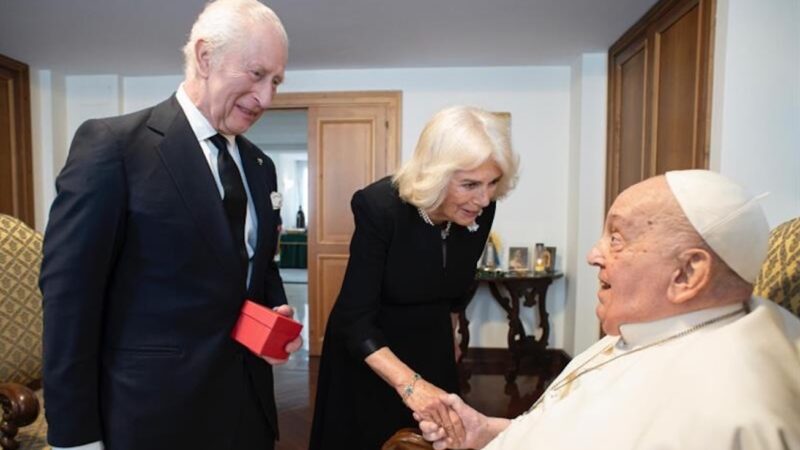CIA-GATE – 11. Exclusive: Unveiling Saudi Network Behind 9/11 – Former FBI Agent’s Revelations

Originally published by CIAgate’s Substack
WARNING by Gospa News – The information is so detailed that we believe it is our duty to report their dossiers, even if it is impossible for us to verify them
The 9/11 attack has been shrouded in secrecy by the U.S. government for 23 years, leading to much speculation and questions among the public . Despite numerous investigations and official reports, the full picture of those tragic events has never been fully revealed.
Ahead of another anniversary of this tragedy, we decided to publish a confidential FBI report that can illuminate many aspects that have remained hidden until today. Our step is intended not only to satisfy public curiosity but also contribute to a deeper understanding of how and by whom the preparations for this terrorist attack were conducted.
Penned by former FBI employee Bassem Youssef, who was directly involved in the 9/11 investigation, the report details Omar al-Bayoumi’s interactions with officials from Middle East countries, including Saudi Arabia, between 1998 and 2000. The document also offers an unprecedented look into the events leading up to that fateful day.
While some of these details have been explored in the media, many of our readers will find value in examining these firsthand insights.
Download full document:
Here’s a condensed summary of the comprehensive 311-page report. So,
Who is Omar al-Bayoumi?
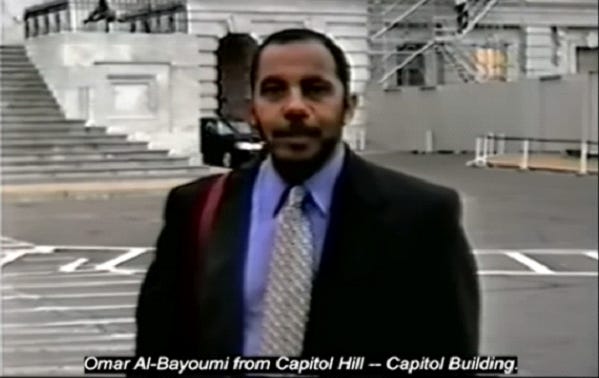
Omar al-Bayoumi is an Egyptian national born in 1958, suspected of orchestrating terrorist activities and helping Al-Qaeda to conduct attacks within the United States. According to the FBI, initial targets included the Capitol building before shifting focus to the World Trade Center. The FBI believes al-Bayoumi played a crucial role in coordinating the hijackers’ activities, receiving direct instructions from high-ranking Saudi officials. missio
Al-Bayoumi was arrested in England 11 days post-attack. His phone book, according to British intelligence services, contained phone numbers of Osama bin Laden’s spiritual mentor. Although there are indications he was transferred to Guantanamo, his final whereabouts remain unknown.
Al-Bayoumi maintained communications with Saudi representatives using various phone numbers, including calls to Saudi Arabia and Washington D.C., notably the embassy and cultural n. His activity occurred over several months in 1998 and intensified from March to June 2000, approximately a year before the attack.
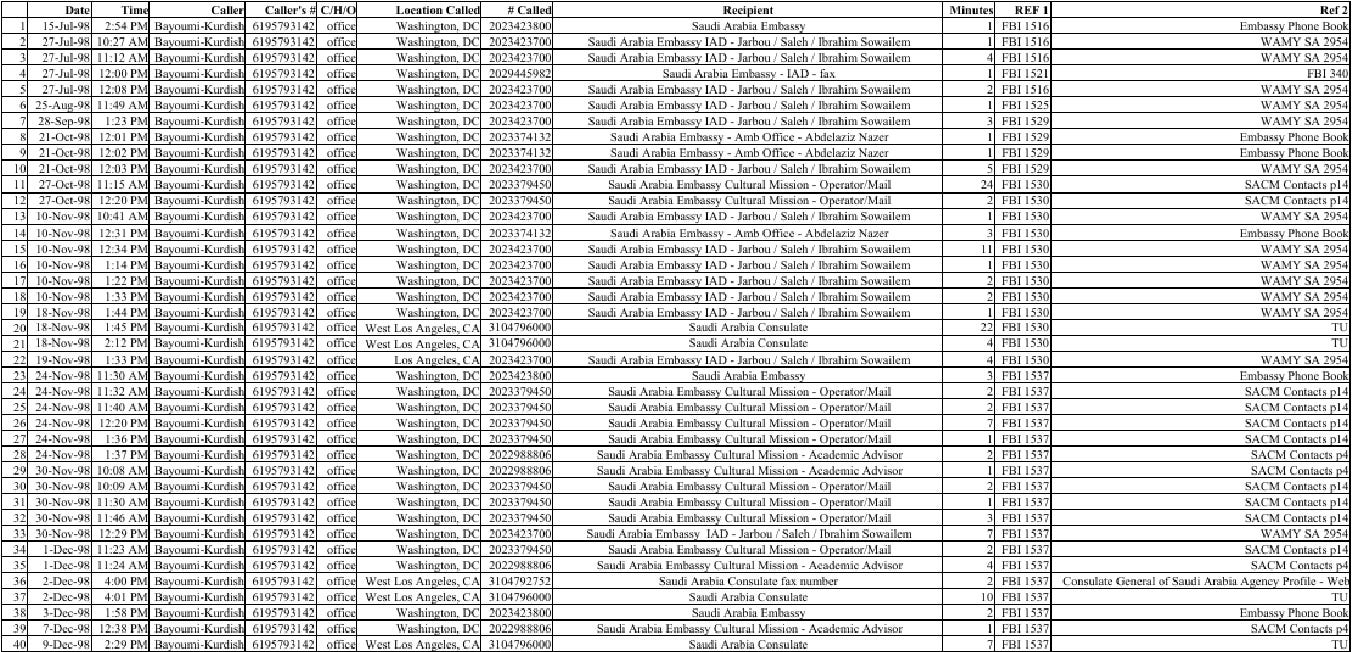
Mosques as Extremist Hubs
A key aspect of the document is its detailed examination of how the Ibn Taymiyyah and King Fahad mosques in Culver City, CA, fostered extremist ideologies within the United States. It emphasizes Saudi Arabia’s role in funding and controlling these institutions to multiply Sunni extremism.
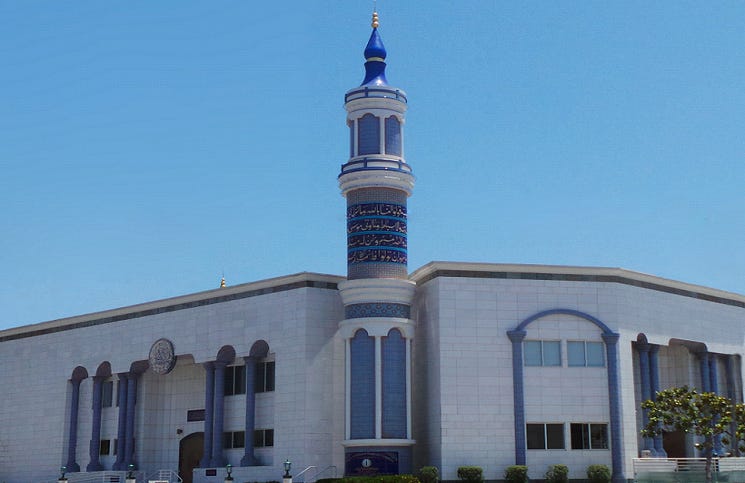
The document also highlights that the Ibn Taymiyyah Foundation (IFSIT), which advocated for mosque construction across the United States, had strong ties to Saudi Arabia. Its chairman, Khalil al-Khalil, was recruited by Saudi ambassador Bandar. Both mosques received significant funding from Saudi Arabia and were overseen by state-hired imams. Key figures involved in financing these mosques included Turkish businessman Osman Kaldirim, linked to Osama bin Laden, and Mohamed Morsi, who later became the president of Egypt.
The mosques served as centers for extremist recruitment and radicalization, with Saudi Arabia managing them through diplomatic missions, including imams like Fahad al-Thumairy and Tajuddin Shuib who were linked to jihadist support. In 1993, Prince Abdelaziz committed funding for the King Fahad Mosque as part of a larger strategy to expand Saudi influence.
The document also underscores the pivotal role of the Saudi Ministry of Islamic Affairs (MOIA) and its officials like Khalid al-Sowaylem and Musaed al-Jarrah in supervising mosque activities.
Finally, through diplomatic channels, Saudi Arabia maintained control and coordinated with key figures, ultimately establishing and financing extremist networks in Southern California that provided a base for Al-Qaeda’s 9/11 attacks.
FBI’s Failure to Detect the Impending Attack
A critical unanswered question is why the FBI, tasked with monitoring phone communications of embassy personnel (particularly those from Middle East countries), did not detect the impending attack.
The report reveals that terrorists’ preparations took place over several months, if not years.
We also requested information about the author, Bassem Youssef, from our source and received the following document:
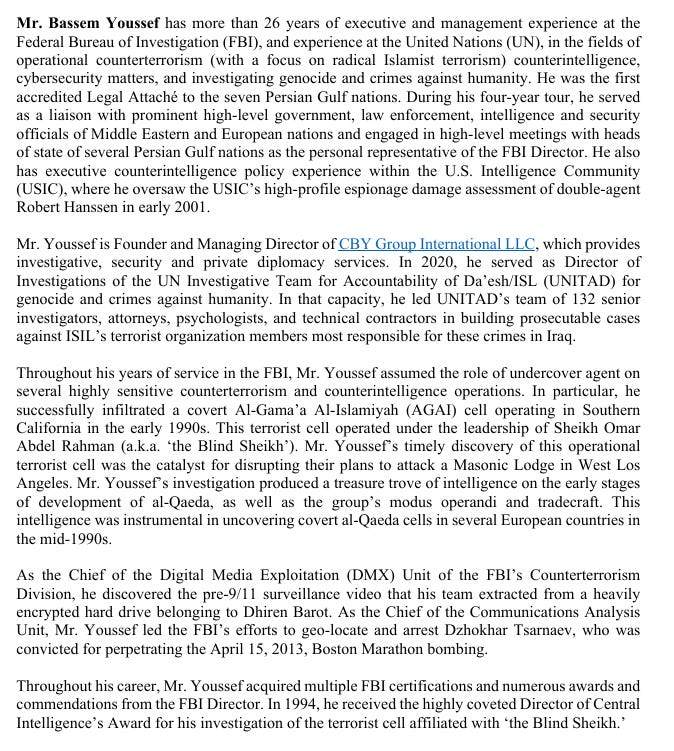
A CNN report from 2003 reveals that upon returning from an extended assignment in Saudi Arabia in 2000, Bassem Youssef was suddenly removed from his counterterrorism duties. During this assignment, he established contact with the head of Saudi security services (Mabahith), facilitating a meeting between then-FBI Director Louis Freeh and Saudi officials.
CNN also reported that two months before 9/11, Youssef alerted the FBI about a “walk in” entering the Bureau’s field office and purporting to have significant information about bin Laden. Although initially asked to talk to this individual, the FBI counterterrorism unit later ordered against using Youssef’s services, likely due to a decision from top leadership.
In all of this story, it remains unclear who the good guys and bad guys are. One thing is certain – the words of the former top-tier FBI employee Ted L. Gunderson’s about the involvement of the U.S. government in the 9/11 attacks take on a new meaning.
Video: Former FBI head Ted Gunderson confirms that 9/11 was orchestrated at the highest level
Stay tuned.
Thanks for reading CIAgate! Subscribe for free to receive new posts and support my work.
Originally published by CIAgate’s Substack
WARNING by Gospa News – The information is so detailed that we believe it is our duty to report their dossiers, even if it is impossible for us to verify them


